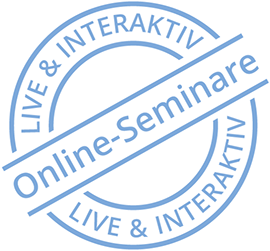
REFA Consulting provides supports in projects such as:
- Process analysis and process optimization in production
- Process analysis and process optimization in work preparation (AV)
- Process analysis and process optimization in setup procedures
- Process analysis and process optimization in maintenance
- Process analysis and process optimization in logistics (warehousing, dispatch, picking)
- Process analysis and process optimization within the framework of establishing your company’s time management system.
REFA Consulting optimizes processes using the REFA methodology. Throughput times are minimized, quality standards are secured and cost is reduced. As a result, the competitiveness of a company is strengthened and its operative result will improved.
Rationalization and restructuring to reduce costs
With the opportunities for improvement identified, as a result of the process analysis (REFA standard program), concrete measures for rationalization and restructuring can be defined, eventually leading to a significant reduction in production costs. Production costs form the central cost element in any industry. Roughly composed of material costs and production costs they can be broken down into direct material costs, material overhead costs, direct labour cost, production overhead costs as well as research and development costs. All cost types will be considered during a process analysis.
Production planning and control - We’ll show opportunities for improvement
With the assessment of the material flow via a weak point analysis and the identification of opportunities for improvement via the process analysis, the need for action in production planning and control will become evident. Production planning and control, together with its IT infrastructure, form the "backbone" of any industrial production systems. Here, concepts, methods and tools have to be applied holistically in order to ensure and increase the effectiveness and efficiency of the entire value chain.
Production planning and control - We’ll show opportunities for improvement
You can rely on the expertise of our certified REFA consultants when it comes to the introduction of the following tools as part of your journey to sustainable process optimization:
Value stream analysis and design
The value stream analysis is an industrial management tool for improving processes in production and services. It is also referred to as current state value stream mapping.
PPS systems
The aim of the PPS systems (production planning and control) is the realization of short throughput times, adherence to deadlines in order processing, the realization of optimal stock levels and the economical use of equipment. ERP systems (Enterprise Resource Planning) cover the functional scope of the PPS systems and also integrate the company's human and financial resources.
5S method
The aim of a 5S program is to set up the workstations so that the work can be carried out without problems, the search for parts as well as long transport distances and waiting times are avoided and work can be carried out without waste. A clean and orderly work environment is also the basis for quality work.
Six Sigma
The aim of the Six Sigma method is process improvement as an instrument of quality management. Core elements are: the description, measurement, analysis, improvement and monitoring of business processes with statistical means. The objectives are based on financial key figures important to the company and customer requirements.
Kaizen
Kaizen is a methodical concept that focuses on continuous and infinite improvement. Improvement is a step-by-step approach to achieve perfect or optimized products or processes.
Lean Production, Lean Management
Lean production is a whole set of principles, with the desired effects mainly resulting from their interaction. It makes little sense to establish some of these principles and to omit others. In general its aim is
- To combine competence and responsibility,
- To work in networks,
- To avoid waste and errors (Muda),
- To synchronize the processes,
- To strive for continuous improvement (Kaizen, KVP),
- To restructure if necessary (Kaikaku).
Value Analysis
Value analysis is used in the development and improvement of products and technical processes. A considerable improvement and increase in the value of products is usually achieved, combined with a reduction in the effort and costs compared to the original situation. The value analysis is carried out as a project and in small interdisciplinary teams.
CIP
Within the scope of a KVP project, the employees work independently on their departments and teams on ongoing improvements in their area of responsibility (quality circle) and in their environment. Small improvements of any kind are in the foreground. In order to achieve economic success, it is important to establish CIP as an integrated part of the overall corporate culture.
PDM
PDM is a concept designed to store, manage, and deliver product-defining data and documents as a result of product development to subsequent phases of the product life cycle in order to reduce cost and optimize processes during the product life cycle.
REFA stress analyzes
REFA experts determine physical and psychological stress factors regarding your employees and advise on the optimization of the workstations and create an independent REFA assessments. Stress analyzes are often performed hand in hand with process analyzes.



